The Bureau of Land Management’s Winnemucca Field Office is accepting public comment, input, suggestions and recommendations for the development of their new Resource Management Plan. This is a crucial framework that will guide BLM in future decisions affecting the area for the next 10-30 years.
This Winnemucca Field Office is the responsible district for the Calico Complex and many other wild horse and burro use areas in Northern Nevada.
Please take a few moments out to submit your ideas, comments, input and suggestions for incorporation in the final plan as the number of comments BLM receives, as well as the kinds of recommendations, are critical to the future of wild horses and burros.
Listed below are some of my own ideas and recommendations. Feel free to use them for inspiration or incorporation in your own comments.
This Winnemucca Field Office is the responsible district for the Calico Complex and many other wild horse and burro use areas in Northern Nevada.
Please take a few moments out to submit your ideas, comments, input and suggestions for incorporation in the final plan as the number of comments BLM receives, as well as the kinds of recommendations, are critical to the future of wild horses and burros.
Listed below are some of my own ideas and recommendations. Feel free to use them for inspiration or incorporation in your own comments.

Wild Horse from the Calico Herd Management Area
Courtesy of BLM - 2004
Courtesy of BLM - 2004
Winnemucca Draft Resource Management Plan
I support Alternative C as well as the incorporation of the following recommendations in all Alternatives and analysis in the Final Environmental Impact Statement and Record of Decision.
> Include legal land descriptions for all Herd Areas and Herd Management Areas.
> Review all Herd Areas within the planning area for reintroduction to Herd Management Status as required by CFR 4700.3-1. Provide a detailed analysis and reasons for previous withdrawals as well as potential mitigation measures that may reinstate wild populations on legally designated Herd Areas.
> Identify wild hose and burro use areas as suitable for designation as wild horse and burro “ranges” to be devoted principally as sanctuaries for their protection and preservation as per Section 1333(a) of the Wild Free-Roaming Horse and Burro Act and 43 C.F.R 4710.3-2.
> Develop Alternatives that incorporate the designation of ACECs (Areas of Critical Environmental Concern) for all remaining wild burro herds and the critical habitat and resources if necessary to insure self-sustaining genetically viable populations within the planning area as per the FLMPA, Section 202 [43 U.S.C. 1712] (a)(3) for long-term sustainability.
> Identify Herd Areas, Herd Management Areas and Ranges that provide unique opportunities to develop public viewing opportunities and/or development of ecotourism based on the promotion of wild herds as well as including an analysis of potential economic benefits this would bring to local communities.
> Identify any bands or herds that use two or more Herd Management Areas to secure suitable year-long habitat and resources based on environmental conditions, migratory patterns or seasonal movement.
> Base wild horse and burro resource allocations on scientific and rational principles. Incorporate suitability criteria be established within the framework of the RMP as recommended by the National Academy of Science over 30 years ago to better reflect actual use and available forage for free-roaming populations to achieve accurate appropriate management levels and “excess” determinations.
> Develop and incorporate within the framework of the RMP the methodology used to distinguish wild horse and burro impacts from livestock and other rangeland users. One potential method is to mandate monitoring and utilization levels be measured prior to the introduction of livestock in a given area order to distinguish class use and impacts.
> In all Herd Management Areas, assure management plans will provide allocations and resources adequate to maintain a minimum of 150 animals at all times on the range per individual HMA as necessary to maintain long-term genetic viability according to the best available science. This will prevent inbreeding or population crashes as required by CFR 4700.0-6(a) and to ensure that populations are being managed as an integral part of the natural systems of the public lands.
> In individual Herd Management Areas, prohibit management plans and strategies that fail to provide for self-sustaining wild horse and burro populations lower than a minimum population of 150 animals based on the concept of “genetic interchange” between bands or herds from different Herd Management Areas. The only exception to this could be if BLM can conclusively document known population interchanges by photographs or other identifiable markings of animals on a multiple and consistent long-term basis.
> If necessary to provide habitat for wild horses or burros, to implement herd management actions, or to protect wild horses or burros from disease, harassment or injury, invoke BLMs authority to reduce or close areas of public lands to grazing use by all or a particular kind of livestock as established by C.F.R. 4710.5 (a), with the goal of maintaining self-sustaining genetically viable wild horse and burro populations through allocations assuring resources are adequate to maintain a minimum of 150 animals at all times on the range per individual HMA.
> Prohibit the use of “blanket” management options that allow for wild horse and burro reductions without supporting data to make excess determinations, i.e., “in the absence of species specific data, equitable reductions in livestock and wild horse and/or burros authorizations will be implemented.” The historical problem with the management approach of authorizing “equitable reductions” is there is no accountability or consequence to BLM if they fail to reduce the livestock portion of the projected reductions. Traditionally, BLM has removed wild horses and/or burros or reduced their population objectives while making no changes or increasing livestock authorizations shortly after applying changes exclusively to free-roaming populations.
> Prohibit the issuance of non-renewable grazing permits in any wild horse and burro Herd Area, Herd Management Area or Range in order to allow maximum long-term rangeland health due to year long grazing pressure in these designated areas.
> Establish criteria within the RMP framework for incorporating periodic monitoring at “key” times to establish data on available water. This should include mandatory flow rates, water quality data, status of historic sources (in order to collect trend data on water availability) and photographic evidence to establish credibility in BLMs data.
> Various related multiple use decisions issued by the Winnemucca Field Office as well as surrounding areas indicate the potential for significant and cumulative impacts to underground aquifers and water sources due to drawdown. Incorporate provisions within the RMP that provide mitigation measures for water loss, increase available habitat, disperse consolidated grazing pressures, and insure supplemental low cost water sources are available in times of drought or harsh environmental conditions for wild horses and burros as well as other wildlife species within the planning area.
> Prohibit the use of any sterilization measures on populations that fall below the minimum genetic threshold of 150 animals or less and assure balanced gender structures to preserve natural herd behaviors and social dynamics.
> Prohibit the inclusion of foals one year and under in population inventories and calculations occurring on the range for “excess” population determinations.
> Establish population objectives and thresholds for big game species within the planning area to insure habitats support a “thriving natural ecological balance” between all species. The current policy to omit critical information on species populations, increased pressure on resource requirements and their resulting impacts fails to conform to federal law mandating scientifically sound management decisions and quality data to determine suitable habitat for all rangeland users. As public stewards, BLM needs to recognize and honor their position to preserve and protect all resources for the American people, both now and for future generations. State wildlife agencies have a vested interest in increasing big game populations to increase revenue. As such, studies, data, recommendations and management objectives may contain inherent “conflicts of interest” and biased towards the balanced management of resources on public lands.
> Provide for public review a detailed examination and analysis of all current multiple use applications within each Herd Area and Herd Management Area within the planning area. This is to include current livestock authorizations, the percentage each allotment overlaps existing wild horse and burro areas as well as maps clearly showing the relationship and resource allocations between livestock and wild equids within the planning area. The purpose of this information is to help the public be reasonably informed as to BLMs compliance with the Act’s mandate to accomplish the protection of wild free-roaming horses and burros through their consideration as an integral part of the natural system of the public lands as well as their relationships with other uses of the public and adjacent private lands as outlined in CFR 4710.3.
> With respect to wildlife impacts to critical resources required by wild horse and burro populations, provide current estimated big game populations such as elk, pronghorn, mule deer and bighorn, populations affecting the wild horse and burro areas within the planning district, reasonably foreseeable future big game population objectives for these same areas that may impact management strategies to maintain self-sustaining genetically viable herds.
> All other multiple use authorizations within Herd Areas and Herd Management Areas such as current mining, oil and gas operations as well as renewable resource projects such as solar, wind or geothermal impacting or reasonably projected to impact habitat and/or resources in the Winnemucca Herd Areas and Herd Management Areas as well as projects or proposals that can be expected to be implemented in the reasonably foreseeable future. This should include a detailed map of each Herd Area and Herd Management Area in the planning area to allow the interested public to assess the impacts of other multiple uses to wild horse and burro habitat and populations in a site-specific manner.
> Include detailed analysis of the miles, kinds and locations of fencing within each HA/HMA within the planning district. Reaffirm strict limitations on fencing in wild horse and burro Herd Areas, Herd Management Areas or Ranges in order to preserve their free-roaming behaviors and to prevent entrapment, injury, death or undue degradation of resources due to limitations on seasonal or migratory movement.
> Incorporate protections for predators in and around herd management areas as a management tool for low cost population control and to support the “thriving natural ecological balance”.
> Prohibit management strategies that are based on “adoption criteria” as the primary consideration. This policy fails to conform to both the intent and the mandates of the Act. Incorporate management strategies that support historical herd traits and local community values for the bands/herds.
> Utilize range management to address wild horses and burros who wander across the borders of Herd Management Areas (HMAs), instead of permanently removing them.
> Removals of any kind should be rare and minimal. Other methods of management must be employed first and given a fair opportunity to succeed. If a limited removal is necessary, it must be done in a humane manner that respects horse social structure and keeps families intact.
~DEADLINE~
MONDAY, OCTOBER 25, 2010
4:30 P.M. PST
SUBMIT TO:
Winnemucca RMP
c/o Bob Edwards
Attn: Winnemucca RMP
Bureau of Land Management
Winnemucca District Office
5100 E. Winnemucca Blvd.
Winnemucca, NV 89445
Fax: (775) 623-1503
Email: wdrmp@blm.gov
Please be aware that your submissions will become part of the public record, including personally identifying information. Though you may request BLM keep this information private, they may not be able to guarantee it in all instances.

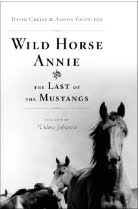








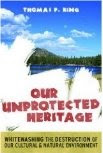



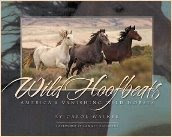




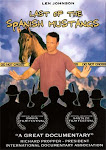





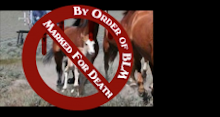
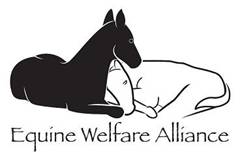
2 comments:
I would suggest No Removals of any kind without 2/3 majority vote by the House and the Senate--IF they can get it onto the floor for a vote.
Cindy, THANK YOU! As always.... complete, concise, and right on target. This is a great help.
Post a Comment